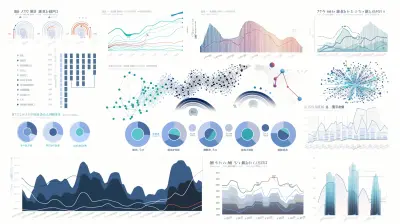Effective Ways to Shorten Your Sales Cycle
2 July 2025
Let’s be real: the sales process can sometimes feel like navigating through an endless maze. You’ve got the perfect product, the pitch is polished, but the deal drags on for what feels like forever. Sound familiar? Yeah, we’ve all been there. The good news is that you can absolutely do something about it. Shortening your sales cycle isn’t rocket science, but it does require a clear strategy and a few tweaks here and there.
In this post, we’re diving into some effective and actionable ways to speed up your sales cycle without cutting corners or losing leads. Grab a coffee, kick back, and let’s get to it!
What Is a Sales Cycle Anyway?
First things first—what exactly are we talking about when we say "sales cycle"? In plain English, the sales cycle is the journey your potential customer takes, from first discovering your business to signing on the dotted line. It's all the steps in between: prospecting, pitching, addressing objections, and closing the deal.Now, the length of a sales cycle can vary depending on your industry, audience, and product. A SaaS company selling affordable software might have a short cycle, while a B2B manufacturer selling million-dollar equipment could face a cycle that drags on for months or even years. But whether you're selling a $10 product or a multi-million-dollar service, you still want to make that timeline as efficient as possible. So, how do you do that? Let’s dig in.
Why Is a Shorter Sales Cycle Important?
Before we dive into the “how,” let’s quickly chat about the "why." Why should you invest energy into shortening your sales cycle? Here are a few reasons:- Higher Revenue: The quicker you close a deal, the faster you can move on to the next prospect and increase sales volume. Time is money, right?
- Better Use of Resources: A long sales cycle can be a drain on your team’s time and energy. Shortening it frees up bandwidth for other tasks.
- Improved Customer Experience: Nobody has the patience for a drawn-out buying process. A streamlined cycle leaves a better impression on your prospect.
Now, let’s roll up our sleeves and figure out how to turbocharge your sales timeline.
1. Qualify Your Leads Early
Imagine spending weeks working on a prospect only to realize they were never interested in your product in the first place. Ouch.Qualifying your leads early in the process is like filtering water before you boil it—you’re saving yourself a lot of time and effort. Ask yourself (and your prospect) the following questions early on:
- Does this lead have a genuine need for my product or service?
- Do they have the budget to make a purchase?
- Are they a decision-maker, or do they need approval from someone else?
You can use tools like CRM software or lead scoring systems to help you identify high-quality leads quickly. Remember, not every lead is worth chasing. Spend your time on the ones that actually want what you’re selling.
2. Use the Right Sales Tools
Technology is your best friend when it comes to speeding up your sales process. There are a ton of sales tools out there designed to make your life easier and your sales cycle shorter. Here are a few examples:- CRM Software: Platforms like HubSpot or Salesforce help you keep track of where each lead is in the pipeline.
- Email Automation: Tools like Mailchimp or ActiveCampaign can automate your follow-ups and eliminate delays in communication.
- Proposal Tools: Apps like PandaDoc or Proposify let you create, send, and get contracts signed in no time.
Think of these tools as your personal sales superheroes—use them wisely, and you’ll be closing deals faster than ever.
3. Shorten Your Sales Pitch
Let’s be honest: nobody wants to sit through a 30-slide PowerPoint presentation or a one-hour demo. Your prospects are busy people, so respect their time by getting to the point.Keep your sales pitch laser-focused on how your product or service solves their pain points. Cut out the fluff, highlight the key benefits, and wrap it up with a clear call to action.
Here’s a pro tip: practice your "elevator pitch." If you can’t explain what you’re selling and why it’s valuable in less than 30 seconds, you’re overcomplicating things.
4. Address Objections Early
Picture this: you’re ready to close the deal, but suddenly your prospect starts voicing concerns. Talk about a buzzkill, right?Don’t wait for objections to pop up at the end of the sales process. Proactively address them early on. This shows you’re prepared, builds trust, and gives your prospect one less reason to delay the purchase.
For example, if pricing is a common objection, talk about ROI and long-term value upfront. If they’re worried about implementation, share success stories or offer a free onboarding session. The goal is to tackle their doubts before they become deal-breakers.
5. Create a Sense of Urgency
Let’s face it: people procrastinate. Without a pressing reason to act, your prospect might drag their feet indefinitely. That’s why creating a sense of urgency is a game-changer.How do you do this? Here are a few ideas:
- Offer a limited-time discount or bonus. (But make sure it’s genuine—fake urgency can backfire!)
- Highlight the costs of inaction. For example, “Every month you wait to invest in our software, you’re losing out on potential customers.”
- Set clear deadlines for next steps, like scheduling a follow-up meeting or signing a contract.
A little nudge in the right direction can go a long way.
6. Simplify the Decision-Making Process
The more hoops your prospect has to jump through, the longer your sales cycle will be. Keep it simple!For starters, provide all the information they need to make a decision—pricing, timelines, features, testimonials—all in one place. Make it easy for them to say "yes."
If multiple decision-makers are involved, try to get them all in the same room (or Zoom call!) to avoid communication bottlenecks. And when it’s time to close the deal, use tools that let them sign contracts digitally. Trust me, nobody wants to go through the hassle of printing, signing, scanning, and emailing.
7. Follow Up Like a Pro
Sometimes, the only thing standing between you and a closed deal is a good follow-up. But here’s the kicker: you don’t want to come off as pushy or desperate.Instead, focus on being helpful. Check in to see if they have any questions, remind them of deadlines, or share additional resources they might find useful. Tools like automated email sequences can do the heavy lifting for you, but make sure your follow-ups feel personal and genuine.
Here’s a fun stat: according to HubSpot, 80% of sales require five or more follow-ups, yet 44% of salespeople give up after one follow-up. Don’t be part of that 44%.
8. Track and Analyze Your Sales Process
Okay, I get it—tracking data isn’t the most exciting part of sales. But it’s absolutely essential if you want to shorten your sales cycle.Take a close look at your current process. Which stages are taking the longest? Are you losing leads at a specific point in the pipeline? Use this data to identify bottlenecks and find opportunities for improvement.
By constantly tweaking and optimizing your process, you’ll get faster and more efficient over time. Think of it like tuning up a car—regular maintenance keeps it running smoothly.
9. Leverage Social Proof
People don’t just want to hear from you; they want to hear from your happy customers. Sharing testimonials, case studies, and success stories can build trust and help prospects move through the sales cycle faster.It’s like shopping on Amazon—when you see a product with tons of glowing reviews, you’re way more likely to hit that “Buy Now” button, right? The same principle applies here. Social proof is powerful, so use it to your advantage.
Wrapping It Up
There you have it—nine tried-and-true ways to shorten your sales cycle. Remember, the goal isn’t just to close deals faster but to do so in a way that’s efficient, effective, and leaves your customers happy.Here’s the thing: no two businesses are the same, so not every tip will work perfectly for you. Test them out, see what clicks, and don’t be afraid to adjust as you go. With a little effort and some fine-tuning, you’ll be closing deals in record time.
all images in this post were generated using AI tools
Category:
Sales StrategiesAuthor:

Caden Robinson
Discussion
rate this article
2 comments
Eva McVicar
This article provides actionable insights into optimizing the sales cycle, emphasizing the importance of understanding customer needs and leveraging technology. Streamlining communication and automating repetitive tasks can significantly enhance efficiency. By fostering stronger relationships and staying responsive, businesses can effectively reduce time to close and increase revenue.
November 26, 2025 at 4:05 AM

Caden Robinson
Thank you for your feedback! I'm glad you found the insights on optimizing the sales cycle and enhancing efficiency through technology valuable.
Morrow Carrillo
Streamlining your sales cycle isn't just about speed; it's about enhancing relationships and understanding customer needs. By prioritizing communication and leveraging technology, businesses can create a responsive environment that drives efficiency and fosters meaningful connections.
July 22, 2025 at 12:02 PM

Caden Robinson
Absolutely! Streamlining the sales cycle is crucial not only for efficiency but also for building strong customer relationships through effective communication and technology. Thank you for highlighting this important aspect!


